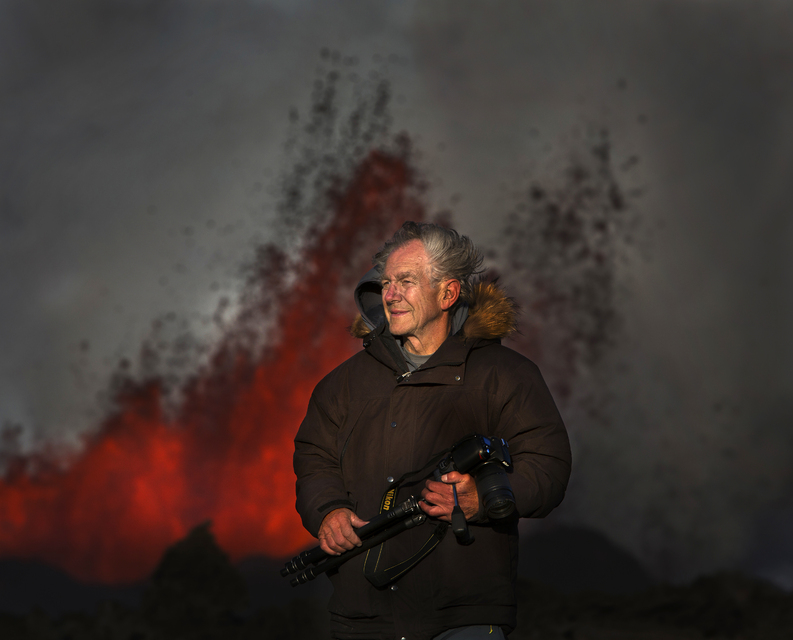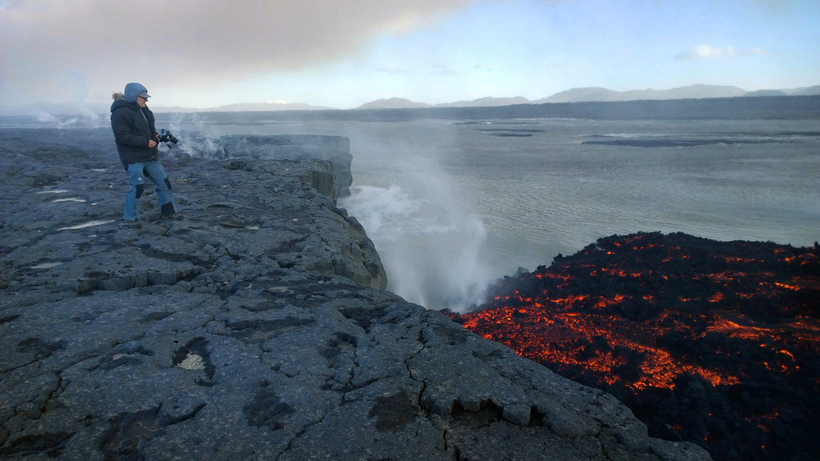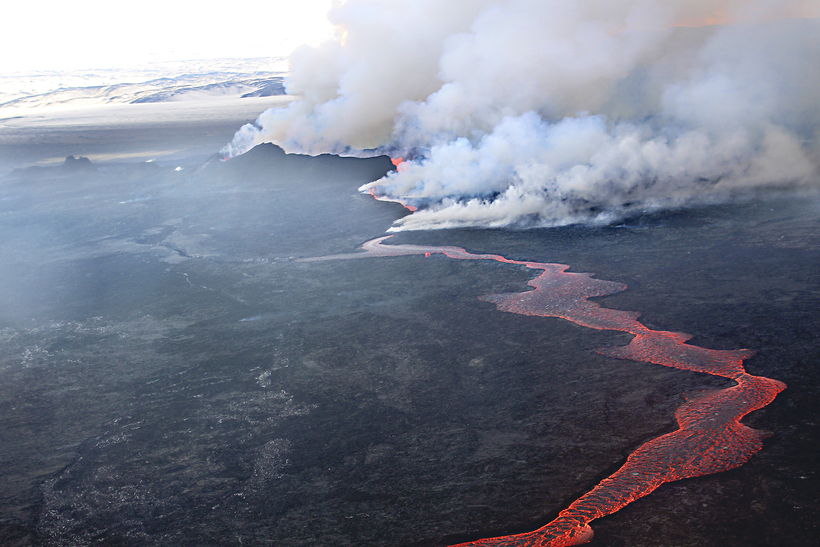Volcanologist Haraldur Sigurdsson predicts end of eruption in March
"The subsidence of the caldera is not linear and by using the trend of subsidence with time its possible to predict when it reaches zero sometime in March 2015, if the present trend continues," explains volcanologist Haraldur Sigurdsson. Photo/Ragnar Axelsson
Icelandic volcanologist Haraldur Sigurdsson has used mathematical research, together with his grandson Gabríel Sölvi to predict that the eruption in Holuhraun will end in March. This is the first time that mathematical research has been used in this way.
Sigurdsson published this information in his blog a week ago and in an interview with mbl.is today he says that his prediction stands. "The subsidence of the caldera is not linear and by using the trend of subsidence with time its possible to predict when it reaches zero sometime in March 2015, if the present trend continues."
Sigurdsson says that everything points to the present trend continuing although of course there's nothing completely certain in the matter. Asked about whether it is common to use mathematics in this way he explains that mathematics has previously been used in geothermal research. "This, however, is the first time that maths has been used to predict the end of an eruption. "
Sigurdsson's grandson, Gabríel Sölvi, a student at the University of Reykjavík used the data to come up with the following:
f(x)=-0,0013x^2+0,4486x-0,3885
d/dx(f(x))=f'(x)=-0,0026x+0,4486
f'(x)=0 þ.þ.a.a 0,0026x=0,4486<->x=172,54
"This means that we predict that on the 173rd day from September 12th the eruption will end, which is I think in March 2015. The subsidence will have reached 38 metres by then,"explains Sigurdsson.
In a new fact sheet from the Scientific Advisory Board of the Icelandic Civil Protection today it states that three scenarios are considered most likely:
- The eruption on Holuhraun declines gradually and subsidence of the Bardarbunga caldera stops.
- Large-scale subsidence of the caldera occurs, prolonging or strengthening the eruption on Holuhraun. In this situation, it is likely that the eruptive fissure would lengthen southwards under Dyngjujokull, resulting in a jokulhlaup and an ash-producing eruption. It is also possible that eruptive fissures could develop in another location under the glacier.
- Large-scale subsidence of the caldera occurs, causing an eruption at the edge of the caldera. Such an eruption would melt large quantities of ice, leading to a major jokulhlaup, accompanied by ash fall.











